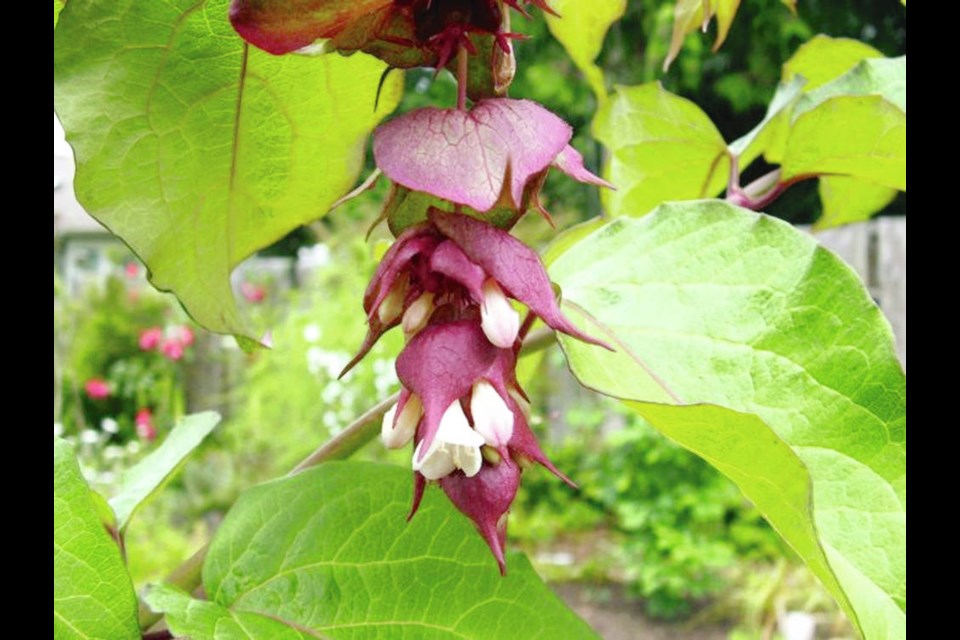I’ll be remembering the summer of 2020 as one of the oddest seasons ever.
First, the pandemic has coloured all facets of life, including gardening. Because of the run on supplies, a key ingredient in my potting and indoor seeding mixes was nowhere to be found. Trying out potentially suitable substitutes proved a ht-and-miss venture, with varying results.
Then there was the late start to the season, with little real warmth until around mid-July. The potted patio tomatoes that usually provide a steady supply of tasty little fruits from mid-July onward did not begin ripening until the first week of August. Some staked, garden tomatoes struggled to set fruit.
People in unprecedented numbers took to their gardens, and the outdoors in general, as places of health, comfort and safety. Food gardens in particular have given a sense of security and solace amid the stress of uncertainty, and most food gardens did not disappoint through the spring and early summer.
Leafy greens, peas, root vegetables and other edibles that do well in cool, moist conditions exploded into vibrant growth. New food gardeners discovered the deep, earthy pleasure in crunching into a tender young carrot and assembling salads of freshly cut lettuce and other leafy greens.
The somewhat challenging season has been a superb one for observing the plants, and varieties, that shine above others in an individual garden’s conditions — useful information for planning next year’s plantings.
Limitations on out-of-home activities have turned the attention of families to life’s essentials: learning, cooking, caring for each other, growing food. Far larger amounts of reader mail than usual over the past six months indicate also that more at-home time has resulted in increased enjoyment of the little delights a garden can offer, like watching hummingbirds visiting kale flowers in early spring and cuphea (firecracker plant) in early summer.
Roses and lavender. A tiny bed next to my garden shed has been for me a “happy place” this summer. A few rose bushes, backed by a small climbing rose, grow behind a curved edging of lavender plants. A tall Leycesteria plant hovers over a chair at one end. That’s where I sit, often with a cup of tea, to shell peas or address some other blessedly mindless task, or just to gaze into the garden.
Blue Splash. It had been a while since I’d grown lobelia for adding to container plantings. Last winter, I decided to return to it with a trailing variety in the Regatta Series called Blue Splash. I planted it with orange signet marigold and purple heliotrope in patio tubs. The little white and blue flowers on small but free-flowering plants have added a charming touch to the plantings. I’ll be growing more of it next year.
Euphorbia again: a warning. Within 10 days of each other, the same story arrived in two emails from different gardeners.
The first was from a woman whose husband was rushed to hospital after sap from Euphorbia plants he was cutting down splashed into his eyes.
In the second email, Lesa writes: “I thought perhaps you could put a warning out about donkey-tail spurge (Euphorbia myrsinites). I had it all over my garden for10 years until one day, while cutting it back, I got some of its white sap in my eyes. Thankfully, it was an indirect hit, but still it was horrendous enough to cause severe pain and had me in the hospital for hours getting my eyes flushed.
“After that ordeal I dug all the plants up, but they are never really gone as new plants pup up constantly. The plant is banned in many states. I wonder why it is not banned here.”
All euphorbias are skin and eye irritants, to varying degrees. The sap of donkey-tail spurge is especially irritating. Whenever working with any of the euphorbias, wear gloves, eye protection and long sleeves. Sap on skin exposed to sun can cause severe blistering.
Donkey-tail spurge has been a popular garden plant for its easy-growing nature in hot, sunny sites with poor, dry soil. It’s a handsome evergreen perennial that trails stems of grey-blue, succulent leaves and bears clusters of chartreuse flowers through the spring.
England’s Royal Horticultural Society has bestowed an Award of Garden Merit on this euphorbia, while several American states have classed it as a noxious weed because it reseeds so readily. Meticulous deadheading curtails this aggressive habit, which is less of a concern in regions with significant rainfall.



